Ditapis dengan

E-book Samurai with Telephones External Review of Whole Manuscript Anachron…
What is going on when a graphic novel has a twelfth-century samurai pick up a telephone to make a call, or a play has an ancient aristocrat teaching in a present-day schoolroom? Rather than regarding such anachronisms as errors, Samurai with Telephones develops a theory of how texts can use different types of anachronisms to challenge or rewrite history, play with history, or open history up to…
- Edisi
- -
- ISBN/ISSN
- 9780472904518
- Deskripsi Fisik
- 345 hlmn
- Judul Seri
- -
- No. Panggil
- 810 SMI s
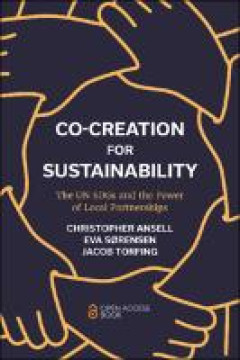
E-book Co-Creation for Sustainability The UN SDGs and the Power of Local Par…
The ebook edition of this title is Open Access and freely available to read online. The UN’s Sustainable Development Goals (SDGs) set an ambitious agenda for global problem-solving and create a framework to achieve it through the power of partnerships. Goal 17 points to the central importance of partnerships, networks, and multi-stakeholder collaborations for bringing together a broad range o…
- Edisi
- -
- ISBN/ISSN
- 9781800438019
- Deskripsi Fisik
- 264 hlmn
- Judul Seri
- -
- No. Panggil
- 338.927 ANS c
E-book Cattle Management Manual
Information about cattle instincts and associated behavior is a valuable tool that helps producers understand why cattle behave or respond as they do. Although cattle have been domesticated for a very long time, they are dictated by the herding instinct, especially if they perceive a dangerous situation. Cattle depend heavily upon sight, and they have a nearly 360-degree panoramic view. This vi…
- Edisi
- -
- ISBN/ISSN
- -
- Deskripsi Fisik
- 88 hlm
- Judul Seri
- -
- No. Panggil
- 599.6 REY c
Kartun Biologi
Apa kamu pingsan waktu disuruh membedah kodok di sekolah? Apa kamu anggap kegunaan DNA hanya untuk menentukan siapa anaknya siapa? Apa kamu masih percaya penggolongan kehidupan cuma "hewan, tumbuhan, manusia?" Jika jawabanmu "ya" untuk pertanyaan-pertanyaan itu, maka kamu perlu membaca buku ini. Buku ini dikemas dengan gaya yang kocak dan informatif mengenai sains kehidupan agar biologi bisa di…
- Edisi
- -
- ISBN/ISSN
- 9786024816223
- Deskripsi Fisik
- 314 + illust; 15 x 23 cm
- Judul Seri
- -
- No. Panggil
- 570 GON k
Kartun Fisika
Jika kamu mengira muatan listrik negatif adalah sesuatu yang muncul pada tagihan kartu kredit, jika kamu membayangkan hukum ohm menentukan berapa lama kamu harus bermeditasi, dan jika kamu percaya mekanika Newton dapat memperbaiki mobil, kamu perlu Kartun Fisika ini untuk meluruskan pengertianmu.
- Edisi
- -
- ISBN/ISSN
- 9786024813321
- Deskripsi Fisik
- vii, 212 hlm+ illust; 15 x 23 cm
- Judul Seri
- -
- No. Panggil
- 530 GON k
Kartun Statistik
Kartun Statistik membahas hampir semua konsep dasar statistik, mulai dari menyarikan dan menyajikan data, probabilitas, mengambil sampel, interval keyakinan, menguji hipotesis, sampai desain eksperimen. Semua konsep itu dipaparkan dengan sederhana, jernih, tentu dengan ilustrasi yang kocak.
- Edisi
- -
- ISBN/ISSN
- 9786024814151
- Deskripsi Fisik
- 224 + illust; 15 x 23 cm
- Judul Seri
- -
- No. Panggil
- 507 GON k
Ide-ide : Filsafat dan Agama Dulu dan Sekarang
Filsafat dan agama sudah setua sejarah tetapi tetap aktual seperti berita hari ini. Ide-ide dari sekian abad yang lalu masih membentuk cara hidup kita, cara pikir kita mengenai diri sendiri.
- Edisi
- -
- ISBN/ISSN
- 9796727455
- Deskripsi Fisik
- 263 hlm; 17 x 23cm
- Judul Seri
- -
- No. Panggil
- 210.1 SMI i
E-book Automatic Religion : Nearhuman Agents of Brazil and France
Brazil’s most famous outsider artist, Arthur Bispo do Rosário, spent fi ft y years in an asylum on the edge of Rio de Janeiro, diagnosed with schizophrenia. On the walls of his studio- cell as well as on objects therein, he created scores of works, many of them now displayed in museums. When, late in life, he gained public recognition, it caused …
- Edisi
- -
- ISBN/ISSN
- 9780226749860
- Deskripsi Fisik
- 333 hlm
- Judul Seri
- -
- No. Panggil
- 230 JOH a
E-book Monkey Trouble : The Scandal of Posthumanism
The human is a source of trouble for posthumanism. Committed to dis-turbing the opposition between human and nonhuman, posthumanist theory has tended to sideline the human from the scene of its theoretical engagements with otherness. The human has become akin to the “Invisible Gorilla” made famous by psychologists Christopher Chabris and Daniel Simons. Seeking to establish …
- Edisi
- -
- ISBN/ISSN
- 9780823277797
- Deskripsi Fisik
- 168 hlm
- Judul Seri
- -
- No. Panggil
- 111 PET m
E-book The Spectre of Capital: Idea and Reality
AlthoughIstartfromMarx,Igobeyondhim.SomybookaimstoreconstructMarx’sworkinthespiritofasystematic-dialecticallogic.Idonottakeaposi-tionhereon‘whatMarxreallymeant’,stilllesson‘whatHegelreallymeant’,noryeton‘whetherMarxgotHegelrightorwrong’.1WhatIaimatisentirelysub-stantive,eventhoughIdrawheavilyuponmyreadingsofHegelandofMarx.InsofarasIappropriatetheirideasformypurposesitiseasytodisce…
- Edisi
- -
- ISBN/ISSN
- 9789004522138
- Deskripsi Fisik
- 462 hlm
- Judul Seri
- -
- No. Panggil
- 332.041 ART t

E-book Schizophrenia: A Very Short Introduction
The schizophrenic patient presented to the public in sensational press reports and lurid films bears little resemblance to reality of the illness. This book describes what schizophrenia is really like, how the illness progresses, and the treatments that have been applied. It also summarizes the most up-to-date knowledge available about the biological bases of this disorder. Finally it attempts …
- Edisi
- -
- ISBN/ISSN
- 9780192802217
- Deskripsi Fisik
- 428 halaman
- Judul Seri
- -
- No. Panggil
- 616.89 FRI s
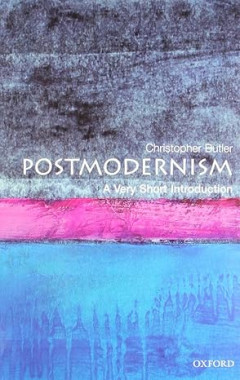
E-book Postmodernism: A Very Short Introduction
Postmodernism has become the buzzword of contemporary society over the last decade. But how can it be defined? In this highly readable introduction the mysteries of this most elusive of concepts are unraveled, casting a critical light upon the way we live now, from the politicizing of museum culture to the cult of the politically correct. The key postmodernist ideas are explored and challenged,…
- Edisi
- -
- ISBN/ISSN
- 9780192802392
- Deskripsi Fisik
- 152 halaman
- Judul Seri
- -
- No. Panggil
- 149.97
E-book A Doctor Across Borders : Raphael Cilento and public health from empir…
When Raphael Cilento drafted his unpublished autobiography, he called it ‘The World, My Oyster’. Some of the other titles he considered—such as ‘Confessions of an International Character’, ‘20th Century Spotlight’, ‘Mankind in the Raw’ and ‘Tapestry of Humanity’—similarly evoked his international career. Other alternatives—such as ‘Topical Confessions of a Tropical D…
- Edisi
- -
- ISBN/ISSN
- 9781760462659
- Deskripsi Fisik
- 326 hlm
- Judul Seri
- -
- No. Panggil
- 994 CAM a
E-book Buddhism and International Humanitarian Law
International humanitarian law (IHL), now synonymous for many withjus inbello, is the branch of international law that governs the conduct of war. Eventhough the main instruments of IHL have been universally ratified, however,and IHL is perhaps the most effective means so far developed to limit theeffects of war, it is notoriously difficult to implement and enforce (Sassòli2007, 46–47; Bartl…
- Edisi
- -
- ISBN/ISSN
- 9781003439820
- Deskripsi Fisik
- 471 hlm
- Judul Seri
- -
- No. Panggil
- 294.3 BAR b
E-book Grassroots Innovation Movements
In August 2015, while we were writing this book, a group of sustainability activists were gathering in the grounds of a borrowed château on the outskirts of Paris. They were intent upon ‘eco-hacking’ the future. What this meant was turning the château into a temporary innovation camp, equipped with the tools for develop-ing a variety of technologies of practical and symbolic…
- Edisi
- -
- ISBN/ISSN
- 9781315697888
- Deskripsi Fisik
- 241 hlm
- Judul Seri
- -
- No. Panggil
- 338.9 SMI g
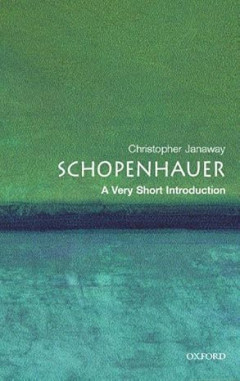
E-book Schopenhauerp: A Very Short Introduction
Schopenhauer is the most readable of German philosophers. This book gives a succinct explanation of his metaphysical system, concentrating on the original aspects of his thought, which inspired many artists and thinkers including Nietzsche, Wagner, Freud, and Wittgenstein. Schopenhauer's central notion is that of the will - a blind, irrational force that he uses to interpret both the human mind…
- Edisi
- -
- ISBN/ISSN
- 9780199661268
- Deskripsi Fisik
- 154 halaman
- Judul Seri
- -
- No. Panggil
- 921 JAN s
E-book Reiner Schurmann and Poetics of Politics
To begin with a thinker who remained always attuned to the du-plicitous nature of beginning requires candor. There is a thetic dimension to every beginning, and we will do well not to deny it here. Rather, let us begin by attending to the things Reiner Schürmann himself said about beginning: “A starting point,” he wrote, “that neither abandons ordinary experience nor t…
- Edisi
- -
- ISBN/ISSN
- 9781947447738
- Deskripsi Fisik
- 178 hlm
- Judul Seri
- -
- No. Panggil
- 189 LON r
E-book London’s Urban Landscape : Another Way of Telling
Substitute the term ‘place’ for the apricot-cocktail glass, and you have the overall theme of this book. It puts forward an account of London’s urban landscape by considering it as a constellation of places linked by paths of movement between them.The aim of this book is to describe these places as faithfully as possible through phenomenological description grounded in partic…
- Edisi
- -
- ISBN/ISSN
- 9781787355583
- Deskripsi Fisik
- 458 hlm
- Judul Seri
- -
- No. Panggil
- 307.76421 JEE l
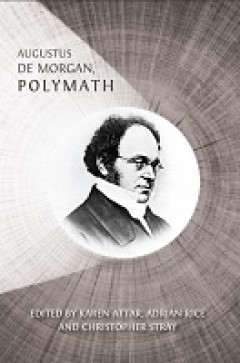
E-book Augustus De Morgan, Polymath: New Perspectives on his Life and Legacy
When Augustus De Morgan died in 1871, he was described as ‘one of the profoundest mathematicians in the United Kingdom’ and even as ‘the greatest of our mathematicians’. But he was far more than just a mathematician. Because much of his voluminous written output on various subjects was scattered throughout journals and encyclopaedias, the breadth of his interests and contributions has b…
- Edisi
- -
- ISBN/ISSN
- 9781805113263
- Deskripsi Fisik
- 388 halaman, ilus.
- Judul Seri
- -
- No. Panggil
- 925 ATT a
E-book Dryland Social-Ecological Systems in Changing Environments
Drylands encompass land areas characterized by a mean annual precipitation to mean annual potential evapotranspiration ratio (known as the aridity index) below 0.65. The aridity index defines four distinct dryland subtypes: hyper-arid (aridity index < 0.05), arid (0.05 ?aridity index < 0.20), semi-arid (0.20 ?aridity index < 0.50) and dry sub-humid …
- Edisi
- -
- ISBN/ISSN
- 9789819993758
- Deskripsi Fisik
- 423 hlm
- Judul Seri
- -
- No. Panggil
- 910.02 SMI d
E-book The Challenges of Nuclear Security : U.S. and Indian Perspectives
Nuclear safety and security—the protection of nuclear facilities, weapons, technologies, and materials against accidents or attacks—is an under-studied area of international security studies.1 Periodically, the subject has received high levels of attention. Following the fall of the Soviet Union, for example, scholars and policymakers worried intense…
- Edisi
- -
- ISBN/ISSN
- 9783031568145
- Deskripsi Fisik
- 321 hlm
- Judul Seri
- -
- No. Panggil
- 327 BOY t

E-book Samurai with Telephones: Anachronism in Japanese Literature
What is going on when a graphic novel has a twelfth-century samurai pick up a telephone to make a call, or a play has an ancient aristocrat teaching in a present-day schoolroom? Rather than regarding such anachronisms as errors, Samurai with Telephones develops a theory of how texts can use different types of anachronisms to challenge or rewrite history, play with history, or open history up to…
- Edisi
- -
- ISBN/ISSN
- 9780472076871
- Deskripsi Fisik
- 243 halaman, ilus.
- Judul Seri
- -
- No. Panggil
- 302.23 SMI s

E-book The Shared Origins of Football, Rugby, and Soccer
In today’s hypercompetitive world, contact sports bring about fierce rivalries between fans, between players, and even between countries. From the Ohio State Buckeyes and the Michigan Wolverines in grid iron football, to the Australian Wallabies and the New Zealand All Blacks in rugby, to Real Madrid and Barcelona in association football (soccer), contact sports incite a passion few other gam…
- Edisi
- -
- ISBN/ISSN
- 9781442246188
- Deskripsi Fisik
- 262 halaman, ilus.
- Judul Seri
- -
- No. Panggil
- 796.309 ROW t
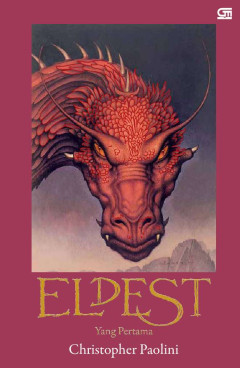
E-Book Eldest (Yang Pertama)
Kegelapan turun... Pedang-pedang beradu... Kejahatan menang. Eragon dan naganya, Saphira, berhasil menyelamatkan para pemberontak dari Raja Galbatorix, penguasa kejam Kekaisaran. Sekarang Eragon harus pergi ke Ellesmera, negeri para elf, untuk mempelajari lebih dalam ilmu sihir dan ilmu pedang, keahlian utama Penunggang Naga. Perjalanan yang luar biasa itu membuatnya sampai di banyak tempa…
- Edisi
- Cet. 6
- ISBN/ISSN
- 9792217185
- Deskripsi Fisik
- 760 hlm; 17 MB
- Judul Seri
- The Inheritance Cycle 2
- No. Panggil
- 813 PAO e
E-book The China Alternative : Changing Regional Order in the Pacific Islands
The Pacific Islands region has entered a new period of uncertainty precipitated in large part by the emergence of China as a major regional actor as well as the reaction of more established powers to perceived threats to their longstanding influence. In March 2019, in the wake of a flurry of activity on the part of Australia, New Zealand and the United States …
- Edisi
- -
- ISBN/ISSN
- 9781760464172
- Deskripsi Fisik
- 520 hlm
- Judul Seri
- -
- No. Panggil
- 320 AQO t
E-book What Works in Conservation 2021
This book is for people who have to make decisions about how best to support or conserve biodiversity. These include land managers, conservationists in the public or private sector, farmers, campaigners, advisors or consultants, policymakers, researchers or people taking action to protect local wildlife. What Works in Conservation and the associated synopses summari…
- Edisi
- -
- ISBN/ISSN
- 9781800642744
- Deskripsi Fisik
- 1041 hlm
- Judul Seri
- -
- No. Panggil
- 639.9 SMI w

E-book The Sperm Cell: Production, Maturation, Fertilization, Regeneration, 2…
This revised and updated second edition provides a comprehensive account of the human male gamete. Detailed overviews of human sperm production, maturation, and function - and how these processes affect and influence fertility, infertility, and assisted reproduction - are given. A wide range of new developments including proteomics, spermatogenesis, sperm-specific WW domain-binding proteins, Ca…
- Edisi
- Second Edition
- ISBN/ISSN
- 9781107126329
- Deskripsi Fisik
- 316 halaman, ilus.
- Judul Seri
- -
- No. Panggil
- 571.864 DEJ t

E-book Eyewitness Books: Future
Here is a spectacular and informative guide to the 21st century and beyond. Original photography and artworks illustrate the extraordinary visions of the future of scientists, artists and inventors through the ages, offering a unique "eyewitness" view of a world we are yet to know. See an insect robot learning to walk, a hypersonic plane, a calendar for the next century, a space hotel and a mil…
- Edisi
- -
- ISBN/ISSN
- 9780756606848
- Deskripsi Fisik
- 72 halaman, ilus.
- Judul Seri
- -
- No. Panggil
- 154.3 TAM e

E-book Eyewitness: Knight
Detailed photographs trace the origins, heyday, and eventual decline of knighthood, chivalry, and the feudal system. Discover how armor was made, how men became knights, and what life in a medieval castle was like. "Great for reluctant readers."--School Library Journal.
- Edisi
- -
- ISBN/ISSN
- 9780756630034
- Deskripsi Fisik
- 74 halaman, ilus.
- Judul Seri
- -
- No. Panggil
- 929.7 GRA e
E-book Religion and Governance in England’s Emerging Colonial Empire, 1601�…
On 15 September 1622, the poet, onetime MP, lawyer and cleric JohnDonne delivered a sermon in the grounds of the old cathedral at St Paul’sCross, in which he argued the importance of religion to the govern-mental success of the Virginia Company (VC). Donne demonstrated,in his inimitable style, that structured religious governance would leadto the company successfully establishing control over…
- Edisi
- -
- ISBN/ISSN
- 9783030701314
- Deskripsi Fisik
- 297 hlm
- Judul Seri
- -
- No. Panggil
- 940 SMI r

E-book Eyewitness: Matter
Examines the elements that make up the physical world and the properties and behavior of different kinds of matter
- Edisi
- -
- ISBN/ISSN
- 9780789461730
- Deskripsi Fisik
- 65 halaman, ilus.
- Judul Seri
- -
- No. Panggil
- 530.4 COO e
E-boo Like Fire : The Paliau Movement and Millenarianism in Melanesia
In early 2012, when I visited Theodore (Ted) Schwartz at his home in Del Mar, California, he had recently finished digitising audio recordings of interviews he had conducted with Manus people in Papua New Guinea (PNG) from 1953 through 1995; the annotated catalogue went on for many pages.1 Ted gave me an audio tour and we listened to Paliau, his supporters, an…
- Edisi
- -
- ISBN/ISSN
- 9781760464257
- Deskripsi Fisik
- 561 hlm
- Judul Seri
- -
- No. Panggil
- 994 FRE l

E-book Benson's Microbiological Applications Short Version: Laboratory Manual…
Benson's Microbiological Applications has been the gold standard of microbiology laboratory manuals for over 30 years. The 77 self-contained, clearly-illustrated exercises, and four-color format with a wealth of added photographs makes this the ideal lab manual. Appropriate for either a majors or non-majors lab course, this manual assumes no prior organic chemistry course has been taken.
- Edisi
- Edisi 13
- ISBN/ISSN
- 9780073402413
- Deskripsi Fisik
- 481 halaman, ilus.
- Judul Seri
- -
- No. Panggil
- 616.01 BRO b
E-book Human Body Encyclopedia
- Edisi
- -
- ISBN/ISSN
- 9781405308486
- Deskripsi Fisik
- 124 halaman, ilus.
- Judul Seri
- -
- No. Panggil
- 612 SMI h
- Edisi
- -
- ISBN/ISSN
- 9781405308486
- Deskripsi Fisik
- 124 halaman, ilus.
- Judul Seri
- -
- No. Panggil
- 612 SMI h

E-book Bats and Viruses: A New Frontier of Emerging Infectious Diseases
Approximately 75% of emerging infectious diseases are zoonoses, and the rate of emergence of zoonotic diseases is on the rise. Bats are being increasingly recognised as an important reservoir of zoonotic viruses of different families, including SARS coronavirus, Nipah virus, Hendra virus and Ebola virus. Understanding bats’ role in emerging zoonotic diseases is crucial to this rapidly expandi…
- Edisi
- -
- ISBN/ISSN
- 9781118818732
- Deskripsi Fisik
- 405 halaman, ilus.
- Judul Seri
- -
- No. Panggil
- 614.34 WAN b
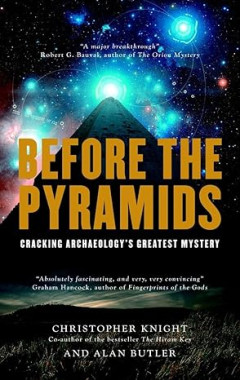
E-book Before the Pyramids: Cracking Archaeology's Greatest Mystery
Were the pyramids of the pharaohs conceived in Britain? The acclaimed coauthors of Civilization One think so, and they take readers on a gripping excursion into ancient religion and astronomy. Knight and Butler not only establish the existence of an advanced civilization with astonishing, almost modern knowledge, but they also explain how the oldest Neolithic monuments--the henges of North York…
- Edisi
- -
- ISBN/ISSN
- 9781907486661
- Deskripsi Fisik
- 252 halaman
- Judul Seri
- -
- No. Panggil
- 932 KNI b
E-book Political Landscapes : Forests, Conservation, and Community in Mexico
In 1937 an offi cial from the Mexican forest service visited the rugged Sierra Tarahumara mountains in southern Chihuahua, which even today remain one of the nation’s most isolated places. Th e landscape that greeted An-tonio H. Sosa was unlike anything he had seen in central Mexico. He ad-mired the “immensity, beauty, and potential” of the untouched Ponderosa and Montezuma pines tha…
- Edisi
- -
- ISBN/ISSN
- 9780822375876
- Deskripsi Fisik
- 361 hlm
- Judul Seri
- -
- No. Panggil
- 970 BOY p
Inheritance : Warisan
Beberapa waktu lalu, Eragon-Shadeslayer, Penunggang Naga bukanlah siapa-siapa, hanya bocah petani miskin. Naganya, Saphira cuma batu biru di hutan. Sekarang, nasib seluruh umat manusia berada di tangan mereka. Latihan dan pertempuran selama berbulan-bulan yang panjang membawa kemenangan dan harapan, tapi juga duka mencekam. Namun, pertempuran yang sesungguhnya belumlah terjadi: mereka harus ber…
- Edisi
- -
- ISBN/ISSN
- 9789792284997
- Deskripsi Fisik
- 916 hlm; 15 x 23 cm
- Judul Seri
- -
- No. Panggil
- 823 PAO i
Brisingr
Eragon dan naganya, Saphira berhasil bertahan hidup setelah pertempuran kolosal melawan para prajurit Kekaisaran di Dataran Membara. Namun masih banyak yang harus dihadapi sang Penunggang dan naganya ini. Eragon harus menyelamatkan Katrina, kekasih Roran dari cengkeraman Raja Galbatorix, sesuai janjinya pada abangnya itu. Tetapi kaum Varden, elf, dan kurcaci pun membutuhkan sang Penunggang. Ket…
- Edisi
- -
- ISBN/ISSN
- 9789792243543
- Deskripsi Fisik
- xviii + 859 hlm; 15 x 23 cm
- Judul Seri
- -
- No. Panggil
- 823 PAO b
Eldest
Eragon dan naganya, Saphira, berhasil menyelamatkan para pemberontak dari Raja Galbatorix, penguasa kejam Kekaisaran. Sekarang Eragon harus pergi ke Ellesmera, negeri para elf, untuk mempelajari lebih dalam ilmu sihir dan ilmu pedang, keahlian utama Penunggang Naga. Perjalanan yang luar biasa itu membuatnya sampai di banyak tempat yang memikat dan menemui orang-orang yang menakjubkan. Setiap ha…
- Edisi
- -
- ISBN/ISSN
- 9789792217186
- Deskripsi Fisik
- xviii + 751 hlm; 15 x 23 cm
- Judul Seri
- -
- No. Panggil
- 823 PAO e
Eragon
Suatu hari Eragon, anak petani miskin berusia lima belas tahun, telah menemukan "batu" berwarna biru yang indah. Ternyata batu itu telur naga! Ditemani Brom si pendongeng tua dan naga yang dinamainya Saphira, Eragon belajar berbagai hal mengenai sejarah dan naga. Brom juga mengajarkan ilmu sihir dan ilmu pedang karena ternyata Eragon adalah penerus klan para Penunggang Naga. Klan ini punah kare…
- Edisi
- -
- ISBN/ISSN
- 9789792208627
- Deskripsi Fisik
- 565 hlm; 15 x 23 cm
- Judul Seri
- -
- No. Panggil
- 823 PAO e
E-book Television Drama in Spain and Latin America : Genre and Format Transla…
An unexpected and enviable problem has emerged in the US: the existence of an excess of quality television series sometimes known as ‘peak TV’. The year 2015 beat the previous record with the transmission of more than four hundred titles. It is no wonder, then, that the special issue of Entertainment Weekly dated 18 September of that year, which provides a preview of t…
- Edisi
- -
- ISBN/ISSN
- 9780854572779
- Deskripsi Fisik
- 228 hlm
- Judul Seri
- -
- No. Panggil
- 791.45461 JUL t
E-book The Passenger: Medieval Texts and Transits
To be an airline passenger in transit is to move through states without permanently adopting them. The very legal nature of a transit lounge embodies this perfectly. When one is in tran-sit, one does not pass through immigration and enter the legal boundaries of a nation-state. The strange nature of transit is best exemplified by its failures — the case of Mehran Karimi Nas…
- Edisi
- -
- ISBN/ISSN
- 9781947447370
- Deskripsi Fisik
- 138 hlm
- Judul Seri
- -
- No. Panggil
- 800 SMI t
E-book Contemporary Debates in Bioethics: European Perspectives
Humans have always had the ability to influence the genetic makeup of their children. Individuals who wanted tall and attractive children, for instance, could find tall and attractive partners to reproduce with, thereby raising the probability that their progeny would be tall and attractive. However, until very recently, this power was limited. Individuals …
- Edisi
- -
- ISBN/ISSN
- 9783110571219
- Deskripsi Fisik
- 187 hlm
- Judul Seri
- -
- No. Panggil
- 170 GYN c

E-book Eyewitness Travel: Top 10 Cuba
True to its name, DK Eyewitness Travel Guide: Top 10 Cuba covers all the island nation's major sights and attractions in easy-to-use "top 10" lists that help you plan the vacation that's right for you.
- Edisi
- -
- ISBN/ISSN
- 9781465457073
- Deskripsi Fisik
- 146 halaman, ilus.
- Judul Seri
- -
- No. Panggil
- 910 BAK e
E-book Eyewitness Travel: Venice and The Veneto
The jewel of the Veneto, Venice is a dreamlike city filled with architectural wonders and incredible collections of art. But this region offers far more than this watery oasis. Lake Garda boasts beautiful scenery, Verona features the world's third-largest Roman Arena, and the Dolomites are rich with alpine forests and verdant hills.
- Edisi
- -
- ISBN/ISSN
- 9781465467980
- Deskripsi Fisik
- 322 halaman, ilus.
- Judul Seri
- -
- No. Panggil
- 910 BOU e
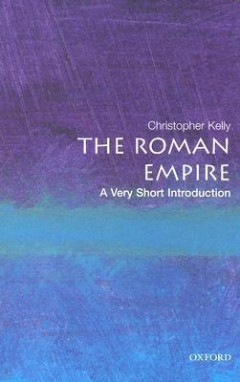
E-book The Roman Empire: A Very Short Introduction
The Roman Empire was a remarkable achievement. It had a population of sixty million people spread across lands encircling the Mediterranean and stretching from northern England to the sun-baked banks of the Euphrates, and from the Rhine to the North African coast. It was, above all else, an empire of force--employing a mixture of violence, suppression, order, and tactical use of power to develo…
- Edisi
- -
- ISBN/ISSN
- 0192803913
- Deskripsi Fisik
- 169 halaman
- Judul Seri
- -
- No. Panggil
- 938.0 KEL t 002856-eB-0122
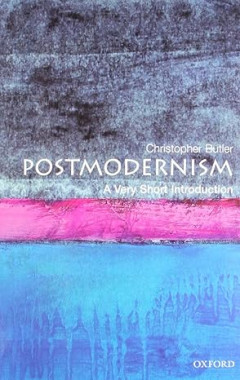
E-book Postmodernism: A Very Short Introduction
Postmodernism has become the buzzword of contemporary society over the last decade. But how can it be defined? In this highly readable introduction the mysteries of this most elusive of concepts are unraveled, casting a critical light upon the way we live now, from the politicizing of museum culture to the cult of the politically correct. The key postmodernist ideas are explored and challenged,…
- Edisi
- -
- ISBN/ISSN
- 0192802399
- Deskripsi Fisik
- 152 halaman
- Judul Seri
- -
- No. Panggil
- 149.97 BUT p 002835-eB-0122
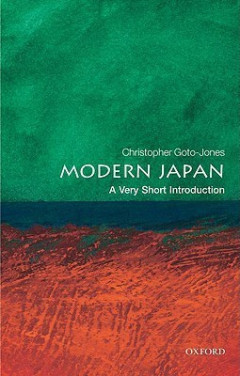
Ebook Modern Japan: A Very Short Introduction
Japan is arguably today's most successful industrial economy, combining almost unprecedented affluence with social stability and apparent harmony. Japanese goods and cultural products--from animated movies and computer games to cars, semiconductors, and management techniques--are consumed around the world. In many ways, Japan is an icon of the modern world, and yet it remains something of an en…
- Edisi
- -
- ISBN/ISSN
- 9780199235608
- Deskripsi Fisik
- 177 halaman
- Judul Seri
- -
- No. Panggil
- 952 GOT m 002858-eB-0122

E-book Norwegian Garden Cities : Yesterday, Today – and Tomorrow?
This book deals with the legacy of Norway’s garden cities. It tracks the origins of the Norwegian garden city movement and discusses the current status of built examples. Through a detailed study of one example, Sinsen Garden City in Oslo, the book links the garden city heritage to a number of ongoing scholarly debates on topics like densification, sustainability, socio-economic conditions, l…
- Edisi
- -
- ISBN/ISSN
- 9788202770075
- Deskripsi Fisik
- 103 hlm
- Judul Seri
- -
- No. Panggil
- 902 SMI n
 Karya Umum
Karya Umum  Filsafat
Filsafat  Agama
Agama  Ilmu-ilmu Sosial
Ilmu-ilmu Sosial  Bahasa
Bahasa  Ilmu-ilmu Murni
Ilmu-ilmu Murni  Ilmu-ilmu Terapan
Ilmu-ilmu Terapan  Kesenian, Hiburan, dan Olahraga
Kesenian, Hiburan, dan Olahraga  Kesusastraan
Kesusastraan  Geografi dan Sejarah
Geografi dan Sejarah